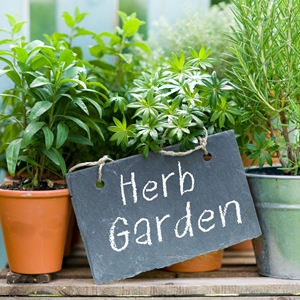How To Grow An Herb Garden

Herbs are one of those ingredients that can fulfill many purposes, such as cooking and scenting. Unfortunately, grocery stores usually sell them in bundles too big to use all at once, causing many of the leaves to go bad. Whether you’re taking online culinary courses or you are a savvy home cook, you could benefit from growing your own herbs. These gardens are easy to maintain and will give you just the amount of leaves you need.
Scout a location
Decide where you want to grow your herb garden. The kitchen window sill is a good spot if you want easy access to your basil. You may also choose to grow the herbs outside. Either way, they need about six hours of light a day.
Prepare equipment
Purchase pots (small ones for inside), soil and soil mix (such as perlite). Place the soil or mix in one of the pots, but don’t pack it down. Loosen the soil if you are planting outside and add mix to clay-heavy dirt. Avoid planting the herbs at midday because the sun could wither newly transferred plants. If they are indoors, simply wait to put the pots near the window until later in the day.
The pots should have holes for drainage because herbs don’t do well with wet roots.
Take a branch
Many herb varieties thrive when taken from an existing plant and grown in a separate pot indoors. Take thyme, oregano, sage and rosemary, for example, and pick a branch off an existing plant. You’ll want the sample to be about 4 inches long, cut from the tip of the plant. Remove the lower leaves and stick the branch in a pot.
Make way for the root
Herbs can also be bought at a gardening store. They are small enough to transfer and you don’t have to cut a branch. If you go this route, make sure the pot or soil where you’ll be growing the herbs has a hole. Place the root of the plant in the hole – which should be about twice the width of the root ball – and cover it with soil.
Space it out
Each plant should be about 18 inches apart so that they don’t steal nutrients from one another. If you’re potting, then only plant a single root.
Add labels
Label the plants so that you can easily identify them when cooking. Eventually you’ll be able to see the difference, but it helps to be explicit initially. You can hang signs on the front of each pot or place a stake in the soil.
Water your herbs
Herbs should get about an inch of water each week. You can tell how moist the soil is by lifting the pot; dry soil will be lighter than wet soil. You can also check the water content by looking at the top of the soil. If it looks dry, go ahead and water.
Cook away
As your herbs grow, you’ll be able to use the leaves for cooking. Pick the leaf from the base of the stem and only take what you need. Having a handy herb garden will let you improvise flavor profiles since you don’t have to run to the store to get a little extra taste.
Related Posts:
When To Use Fresh Vs. Dry Herbs
Herb Identification Culinary Demo
How To Cook A Healthy Herb Quinoa
If you have questions or comments about this video or recipe please leave them below.





Recent Comments